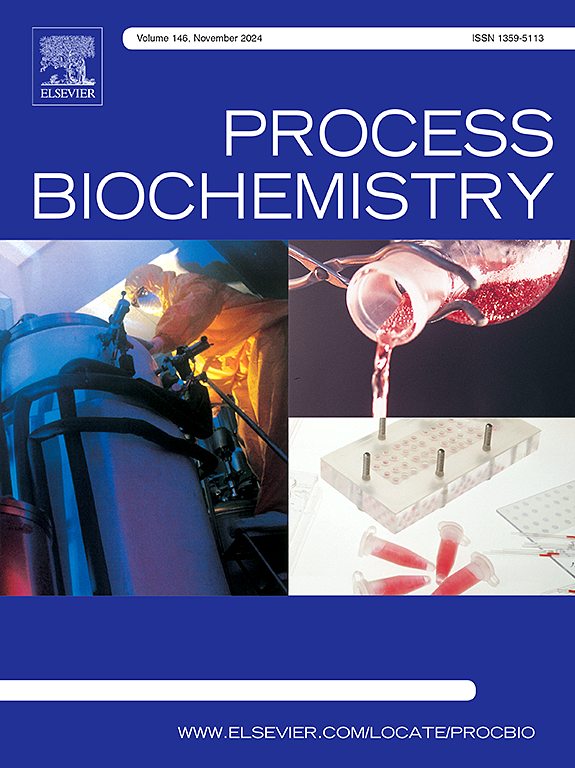Valorization of Solanum melongena L. crop by-products: Phenolic composition and in vitro antioxidant, antidiabetic, anti-inflammatory, cytotoxic, and antimicrobial properties
IF 3.7
3区 生物学
Q2 BIOCHEMISTRY & MOLECULAR BIOLOGY
引用次数: 0
Abstract
This study explored the valorization of post-harvest eggplant aerial parts as a sustainable source of value-added ingredients by investigating their phenolic composition and in vitro bioactive properties. HPLC-DAD-ESI/MSn analysis identified chlorogenic acid derivatives as the predominant phenolic compounds (53 % of the phenolic fraction), followed by O-glycosylated kaempferol and quercetin. The extract displayed antioxidant activity in physiologically relevant cell-based assays and significant α-glucosidase inhibitory capacity that far exceeded that of the standard drug acarbose. It also inhibited the formation of advanced glycation end-products (AGEs), suggesting its potential to mitigate diabetes-related complications. Furthermore, the extract showed a modest pancreatic lipase inhibitory effect and capacity to suppress interleukin 6 production. Selective cytotoxicity against human gastric and colon adenocarcinoma cell lines and strong antimicrobial activity against foodborne pathogens were observed. Given the growing demand for natural alternatives to synthetic drugs, these findings position eggplant crop biomass as a promising, sustainable source of active compounds with potential applications in food, nutraceutical, and pharmaceutical formulations for managing type 2 diabetes and other oxidative stress-mediated conditions. This study not only contributes to the valorization of agricultural waste but also expands the research on by-products of Solanaceae crops, offering a pathway for sustainable resource utilization.
茄类作物副产品的增值:酚类成分及其体外抗氧化、抗糖尿病、抗炎、细胞毒性和抗菌特性
本研究通过研究茄子空中部分的酚类成分和体外生物活性特性,探讨了茄子收获后空中部分作为增值成分的可持续来源的价值。HPLC-DAD-ESI/MSn分析鉴定绿原酸衍生物为主要酚类化合物(占酚类成分的53. %),其次为o -糖基化山奈酚和槲皮素。该提取物在生理相关的细胞实验中显示出抗氧化活性,并具有显著的α-葡萄糖苷酶抑制能力,远远超过标准药物阿卡波糖。它还能抑制晚期糖基化终产物(AGEs)的形成,这表明它有可能减轻糖尿病相关并发症。此外,提取物表现出适度的胰脂肪酶抑制作用和抑制白细胞介素6的能力。对人胃癌和结肠癌细胞株有选择性细胞毒性,对食源性致病菌有较强的抑菌活性。鉴于对合成药物的天然替代品的需求日益增长,这些发现将茄子作物生物量定位为有前途的、可持续的活性化合物来源,在食品、营养保健和药物配方中具有潜在的应用,可用于治疗2型糖尿病和其他氧化应激介导的疾病。本研究不仅有助于农业废弃物的资源化利用,而且拓展了茄科作物副产品的研究,为资源的可持续利用提供了途径。
本文章由计算机程序翻译,如有差异,请以英文原文为准。
求助全文
约1分钟内获得全文
求助全文
来源期刊

Process Biochemistry
生物-工程:化工
CiteScore
8.30
自引率
4.50%
发文量
374
审稿时长
53 days
期刊介绍:
Process Biochemistry is an application-orientated research journal devoted to reporting advances with originality and novelty, in the science and technology of the processes involving bioactive molecules and living organisms. These processes concern the production of useful metabolites or materials, or the removal of toxic compounds using tools and methods of current biology and engineering. Its main areas of interest include novel bioprocesses and enabling technologies (such as nanobiotechnology, tissue engineering, directed evolution, metabolic engineering, systems biology, and synthetic biology) applicable in food (nutraceutical), healthcare (medical, pharmaceutical, cosmetic), energy (biofuels), environmental, and biorefinery industries and their underlying biological and engineering principles.
 求助内容:
求助内容: 应助结果提醒方式:
应助结果提醒方式:


